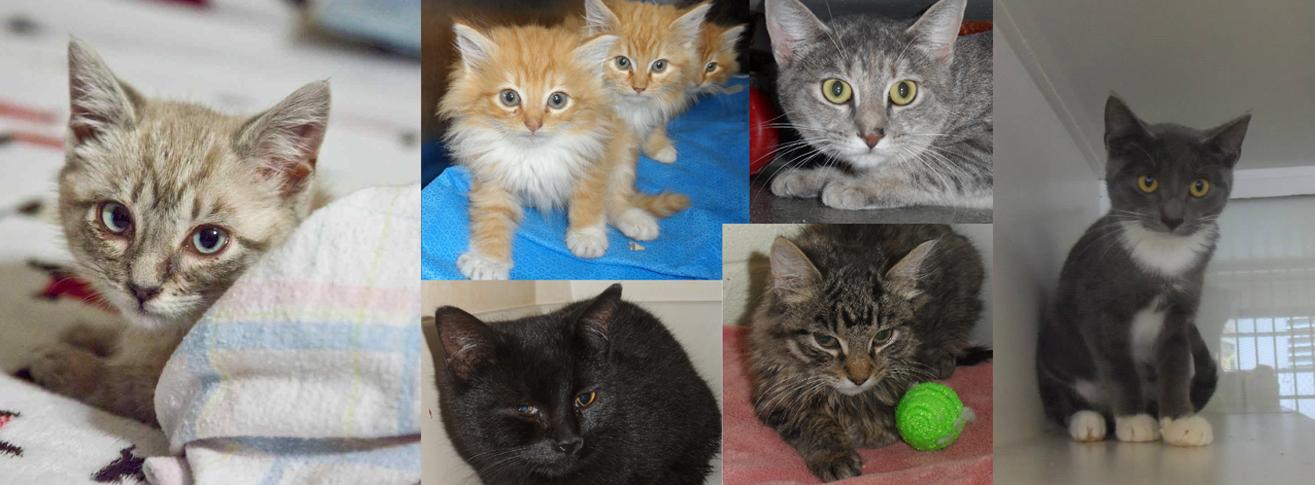Cats Who Stop Using the Litter Box
Cats stop using their litter boxes for a number of reasons, including issues with the box or litter, dissatisfaction with the placement or number of boxes, changes in the environment inside or outside the house, and un-diagnosed medical conditions. You may have to investigate several possibilities before you understand what your cat is trying to tell you, but most issues are easy to remedy.
Try to keep in mind that cats don’t eliminate outside their litter box to purposefully annoy you. Punishment won’t stop or correct the behavior. Since most cases are stress-related, punishment only increases the stress (for you and your kitty) and makes it harder to identify the real cause.
Do a health check
The first step is to take your kitty to your vet for a thorough physical exam. Several medical conditions may result in a cat not using the litter box, so you’ll want to rule these out before looking at other potential causes. The good news is that most medical conditions that cause lapses in litter box use can be easily and inexpensively remedied.
The medical tests done by your vet should include a urinary analysis culture and sensitivity test. A blood panel to test renal values can be more costly, but it is a very helpful diagnostic tool if you can afford it.
It is extremely important to be aware that blockage of the urinary tract can cause rupture of the bladder within 24 hours and often results in death. If your cat goes in and out of the litter box repeatedly and is unable to pass any urine, is licking his/her genital area excessively, or is looking like he/she is distressed and wanting to urinate outside the box, seek medical attention immediately.
Second step: Are all your cats spayed or neutered? We’ve learned that kitties who aren’t neutered may be more likely to urinate inappropriately. If you have questions about spaying or neutering your cat, read Spay or Neuter Your Cat. You can check SPAY USA’s website to see if there’s a clinic or veterinarian in your area that offers low-cost spay/neuter services.
About declawed cats and litter
It is not unusual to see litter box and other behavior issues in cats whose front claws have been removed. Cats deprived of their front claws may develop an aversion to the litter box because their paws remain sensitive or painful from the surgery, so they avoid scratching in their litter and may begin eliminating around the house instead. Look for products such as aspen or pine wood shavings(commonly used for guinea pigs or mice) or soft paper litter such as Yesterday’s News. Shredded paper is another option for you to try.
To read more about the declawing procedure and its consequences, see Declawing: The Price of Convenience.
Consider the litter box
Once you’ve eliminated possible medical conditions as the cause, turn your attention to the litter box itself, since this is most often the culprit. There should be one litter box for each cat in the house, plus one extra (more if you have many cats). Some cats prefer to urinate in one box and defecate in another, so sometimes adding more than one box per cat helps.
Most commercial litter boxes are too small to comfortably accommodate adult cats, so try a larger plastic storage box (such as the ones designed to fit under a bed) and see if a little more room might make a difference. Covered litter boxes may feel too confining to a stressed cat, so unless your kitty is really shy, try removing the covers.
Cats are creatures of habit, so don’t move the litter box suddenly. If you have to move a box from an established location, do it gradually (in extreme cases, just a few inches a day) to give your kitty time to adjust.
Locate the boxes in quiet places that offer a little privacy, away from your cat’s food and water stations. Avoid high traffic zones or noisy areas like laundry rooms. You may have to block off the litter box area with baby gates or pet doors to prevent unwanted intrusions by humans (especially small ones) or other animals.
Avoid placing litter boxes in the corner of a closet or someplace tight, like between the toilet and bathtub. Your kitty may feel that there’s no escape route from such a vulnerable position. Try placing boxes in several different locations. The cat will use the box where he or she feels the safest.
Cats are very fastidious, so keep the litter box as clean as possible to encourage its use. Some cats will only use a box once before it has to be cleaned, so it’s important to scoop regularly, particularly in a house with multiple cats.
Scrub out the boxes with mild, low fragrance soap at least once a week, and more often with really popular boxes. Don’t use bleach or ammonia-based products; instead, soak your boxes in vinegar water when necessary to remove the odor.
If you’ve changed brands or types of litter recently, that may be the problem. Many cats have specific preferences about litter. Generally, avoid scented litter. Cats have sensitive noses and are not fond of chemical or perfume scents. Try clay litters, shredded paper, sawdust, wood pellets, even sand or dirt. If you need to change to another type of litter, do it gradually. Add a little more of the new product each time you change the litter until your kitty is used to the new stuff.
If your cat is consistently going to the bathroom on soft surfaces (carpets, clothing or towels), use a similar item in the litter box. To further encourage use of the box, include some of your cat’s feces or urine and then remove it the next time the box is cleaned. Once use of the box is consistent, try adding a little clay litter with the fabric pieces, then slowly remove the carpet or fabric pieces as your kitty gets used to the new litter.
While you’re doing your detective work to find out why your kitty doesn’t want to use the litter box, there are several things you can do to discourage the inappropriate use of your carpet, furniture and floors.
To start, set up one or more litter boxes that are very appealing and easy to access. Clean the offended area thoroughly using an enzyme cleaner to help eliminate the odor so your cat isn’t tempted to use the same spot again. Then, block off the area or place something there that serves as a deterrent. Cats usually won’t eliminate where there’s food, so try placing a bowl containing a few of their favorite treats on the cleaned carpet or floor.
You can also make the inappropriate areas as undesirable as possible by covering them with aluminum foil or plastic wrap. Plastic carpet runners placed “teeth” side up are good for covering large areas. Be sure you cover the area generously. If the spot is a foot or two wide, cover it with something at least four to six feet wide. After a few weeks of success, start removing the covering in areas that the cat is not bothering, working slowly toward the trouble spots.
Another option to consider: Install an outdoor cattery, a place where your cat may prefer to eliminate. Catteries come in all sizes and shapes; you’re limited only by your imagination. They can be large open enclosures with shelves and cubbies where cats can relax and play (and you can relax and play with them), small covered enclosures just big enough for a litter box, or something in between.
Even if you live in an apartment or condo, there are window catteries you can use. Plans and kits are available online, and you can check out the following articles to come up with some tailor-made ideas of your own:
Resources
Cat behavior can be quite complex. If you’d like to know more, the following books can be very helpful:
Starting from Scratch: How to Correct Behavior Problems in Your Adult Cat by Pam Johnson-Bennett
Your Outta Control Cat by Christine Church
No, Kitty! A Quick-Fix A-Z Problem Solver for Your Cat’s Bad Behavior by Steve Duno
There is also a wealth of information about inappropriate elimination on the Cornell University College of Veterinary Medicine website.
If you’ve tried everything and are still unable to determine the cause of your cat’s inappropriate litterbox behavior, consider consulting a cat behaviorist. To learn more about finding a certified behaviorist, talk to your vet or go to Certified Applied Animal Behaviorists.
The American College of Veterinary Behaviorists (ACVB) lists their members here. Veterinarians who are board-certified in behavior have undergone extensive training and education in animal behavior.
You can also find a behavior consultant through the International Association for Animal Behavior Consultants (IAABC).

